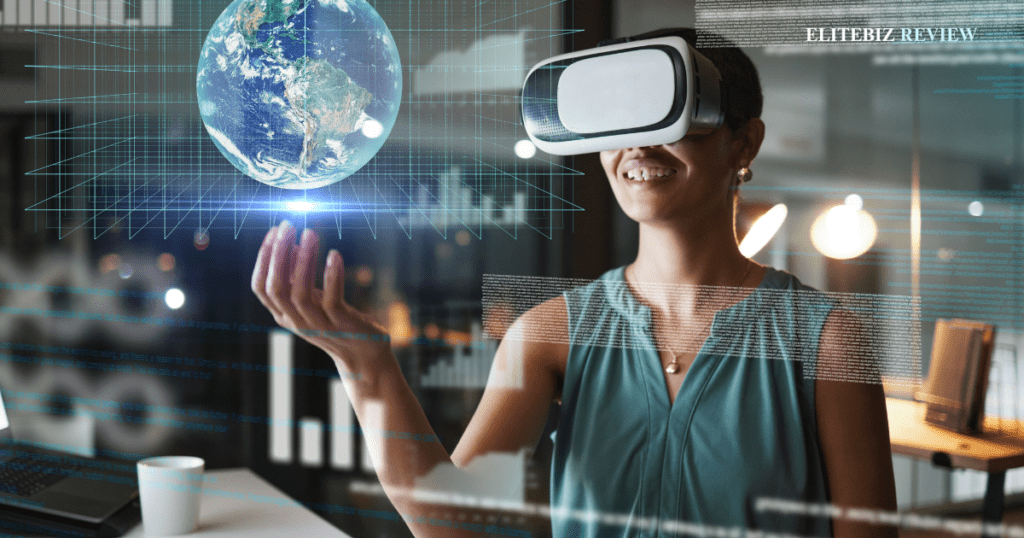AI, Metaverse, and Digital Twins: Transforming the Future of Business and Technology
In the ever-evolving digital landscape, three transformative technologies are leading the charge: Artificial Intelligence (AI), the Metaverse, and Digital Twins. These innovations are not only reshaping industries but also creating a future where businesses can achieve unprecedented efficiency, creativity, and customer engagement. Let’s delve deeper into how these groundbreaking technologies are redefining the future of business and technology. Understanding Digital Twins and Their Industry Applications A Digital Twin is a virtual replica of a physical object, system, or process that uses real-time data to mirror its counterpart’s behavior. This technology provides businesses with the ability to simulate scenarios, predict outcomes, and optimize performance before taking action in the real world. Key Applications Across Industries Manufacturing: Manufacturers use digital twins to monitor and predict equipment performance, reducing downtime and enhancing productivity. For instance, factory machinery equipped with IoT sensors can feed data to a digital twin, allowing operators to detect potential issues before they escalate. Healthcare: In healthcare, digital twins are revolutionizing patient care. Virtual models of organs enable doctors to plan surgeries with precision, while digital replicas of medical facilities improve resource allocation and workflow optimization. Real Estate: Digital twins are transforming real estate by allowing architects and developers to visualize buildings before construction begins. City planners use this technology to design smarter urban infrastructure and ensure sustainable development. By offering actionable insights and real-time data, digital twins are empowering industries to innovate faster and operate smarter. The Metaverse: Unlocking New Business Opportunities The Metaverse represents a virtual world where individuals can interact, work, and shop using avatars in immersive environments. While once a concept limited to science fiction, the metaverse is now a reality, opening doors to a new era of business opportunities. How Businesses Can Leverage the Metaverse Marketing and Branding: Brands are creating virtual stores and hosting digital events within the metaverse to engage with audiences in unique and interactive ways. This new medium offers an unparalleled opportunity to stand out in a crowded market. Customer Experience: Imagine giving customers the ability to try on clothes virtually or explore a hotel room before booking—all from the comfort of their homes. Businesses in retail, travel, and real estate are leveraging the metaverse to create these experiences. Remote Collaboration: The metaverse is revolutionizing team collaboration by offering immersive workspaces where employees can interact in virtual offices, brainstorm ideas, and build stronger connections. With its limitless possibilities, the metaverse is poised to become a cornerstone of digital transformation strategies for businesses worldwide. AI in Business: Driving Innovation and Growth Artificial Intelligence has emerged as a game-changer, driving innovation and efficiency across industries. Its ability to process massive datasets and generate actionable insights is helping businesses operate smarter and stay ahead of the competition. AI Applications Transforming Businesses Customer Service: AI chatbots like ChatGPT provide instant, personalized responses to customer queries, enhancing satisfaction and reducing wait times. Predictive Analytics: By analyzing past trends, AI enables businesses to predict market demands, optimize inventory, and make informed decisions. Process Automation: From automating repetitive tasks to managing complex workflows, AI helps businesses save time and resources while minimizing errors. By embracing AI, companies are unlocking new levels of productivity, innovation, and profitability. AI and Personalization: Elevating Customer Engagement In today’s customer-centric world, personalization is key to building meaningful connections, and AI plays a pivotal role in making it possible. By analyzing vast amounts of data, AI helps businesses deliver highly tailored experiences that resonate with their audiences. How AI Is Personalizing Experiences Chatbots: Intelligent chatbots engage users with relevant, context-aware responses, providing seamless customer support. Product Recommendations: E-commerce platforms like Amazon use AI to analyze user behavior and recommend products that align with their preferences, boosting sales and engagement. Tailored Content: AI algorithms on platforms like Spotify and Netflix curate personalized playlists and recommendations based on individual preferences, creating a unique user experience. AI-driven personalization is not just a trend—it’s the future of customer engagement, helping businesses foster loyalty and drive long-term success. Addressing Ethical Challenges in AI While AI offers incredible opportunities, it also raises ethical concerns that businesses must address. From data privacy issues to algorithmic bias, navigating these challenges is essential to ensure responsible AI adoption. Key Ethical Considerations Data Privacy: With the increasing use of customer data, businesses must implement robust security measures to protect sensitive information. Transparent data usage policies build trust with customers. Bias and Fairness: AI models trained on biased datasets can perpetuate discrimination. Businesses must regularly audit their algorithms and use diverse datasets to mitigate bias. Transparency: Customers deserve to know how AI systems make decisions. By being transparent about AI processes, companies can build credibility and trust. Businesses that prioritize ethical AI practices not only mitigate risks but also position themselves as trustworthy leaders in their industries. Integrating Digital Twins, the Metaverse, and AI for Synergistic Growth While each of these technologies is transformative on its own, their combined potential is even greater. Imagine using AI to analyze data from digital twins, then deploying insights within the metaverse to create immersive, data-driven customer experiences. Future Possibilities Smart Cities: Digital twins combined with AI can optimize urban planning, while the metaverse offers virtual representations of these cities for residents and stakeholders. Healthcare Innovation: AI-driven insights from digital twins can guide personalized treatments, while the metaverse enables virtual consultations and training for medical professionals. Enhanced Retail: Businesses can integrate AI-driven personalization with metaverse experiences to offer customers virtual shopping in stores designed using digital twins. The convergence of these technologies is paving the way for a smarter, more interconnected future. Conclusion As we look ahead, AI, the Metaverse, and Digital Twins are not just buzzwords—they are transformative forces that will shape the future of business and technology. These innovations offer opportunities to enhance efficiency, create immersive experiences, and tackle complex challenges. For businesses, embracing these technologies is no longer optional—it’s essential for staying competitive in an increasingly digital world. By leveraging their combined power, companies can not only drive growth but also lead the way in



